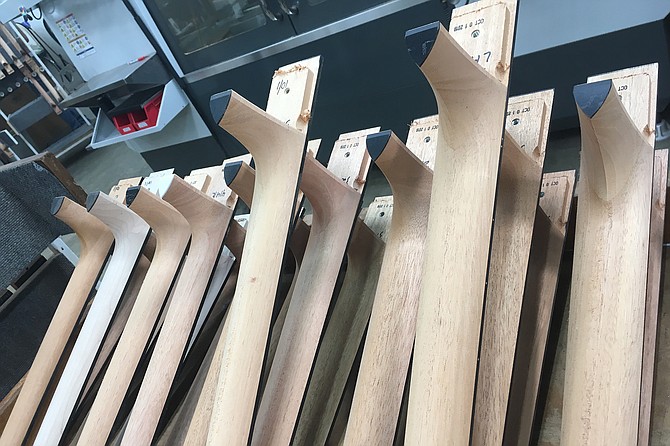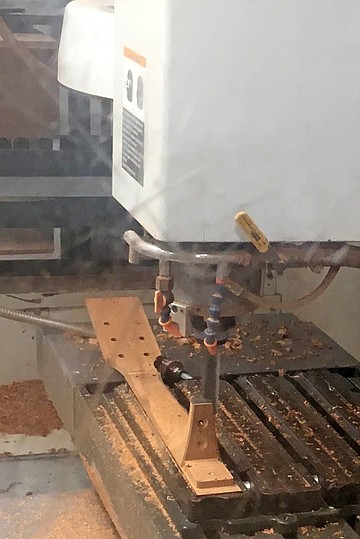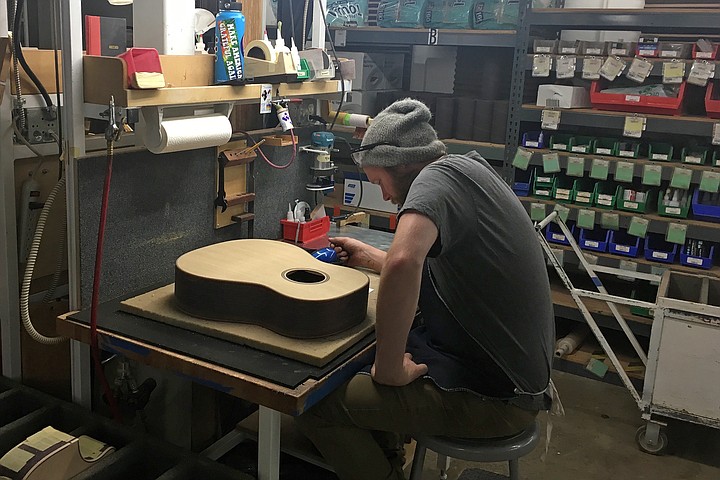 Facebook
Facebook
 X
X
 Instagram
Instagram
 TikTok
TikTok
 Youtube
Youtube

I once asked my wife if she thought I should attend art school. “How about business school?” she replied.
A fellow I know, call him Tony, recently pared his collection of 40 guitars down to 20 or so. When he buys a guitar, he buys three of the same model, plays them until he finds the one that works with him, and returns the other two. He’s built enough guitars over the years that he’s now building one from the spare parts he has left over. He counts professional musicians among his close friends. But Tony is happy that he didn’t try to make a career out of music — because it’s a terrible business. “Geffen Records sued Neil Young for making albums that didn’t sound like Neil Young albums,” Tony marveled. (He added that the company was right about the albums; it was the thought of getting sued for not turning yourself into a brand that galled him.) Instead, he works in regular business, the kind where you negotiate contracts that don’t get quite so personal as Young’s was with Geffen.

Tony doesn’t live in San Diego, but he did pay a visit to El Cajon a while back, to take the Taylor Guitar factory tour, offered nearly every Monday-Friday at 1 pm. “When we finished the tour,” he recalled, “I heard one of the other guests say, ‘I thought there would be more people.’ I think he was hoping to see Geppetto, bent over his workbench, assembling every piece by hand.” A note of impatience crept into his voice. “Taylor makes a good guitar,” and using robots — to carve the necks, to buff the bodies, to apply the finish — helps them achieve better consistency and keep costs low. It’s just good business. You want romance? Buy three Taylors and play until one of them sings to you.
Or maybe read Bob Taylor’s business memoir Guitar Lessons, which Tony admired for its account of the author’s ability to, as Taylor writes, “stick with it and make adjustments to your course as you go.” It sounds blah, until you hear that Taylor “had to fire all his employees, more than once,” and find a way to keep going. Until you read that he took inspiration from Our Hills and Valleys’ account of Spring Valley pioneers, and the way it often took three owners to make a homestead thrive — the third building atop what had been left them by the first two.

Last week, I followed Tony’s lead and took the Taylor tour. As we waited in the showroom, I overheard an old-timer telling his friend about his Deering banjo. Greg Deering got Taylor started on improving his guitar-making mechanics just a month after Taylor opened shop in 1974: “This was the first time I realized that higher quantity did not necessarily mean lower quantity.” The two wound up combing the Convair salvage yard for hardware, and Taylor spent most of his “free, nonworking hours building machines” to improve his business by making better music-making machines. Besides Mr. Banjo, there were several guitarists in the tour group, plus a guitar builder. Also present: students from the University of San Diego, analyzing Taylor as part of a Decision Sciences class in Operations Management.


I once asked my wife if she thought I should attend art school. “How about business school?” she replied.
A fellow I know, call him Tony, recently pared his collection of 40 guitars down to 20 or so. When he buys a guitar, he buys three of the same model, plays them until he finds the one that works with him, and returns the other two. He’s built enough guitars over the years that he’s now building one from the spare parts he has left over. He counts professional musicians among his close friends. But Tony is happy that he didn’t try to make a career out of music — because it’s a terrible business. “Geffen Records sued Neil Young for making albums that didn’t sound like Neil Young albums,” Tony marveled. (He added that the company was right about the albums; it was the thought of getting sued for not turning yourself into a brand that galled him.) Instead, he works in regular business, the kind where you negotiate contracts that don’t get quite so personal as Young’s was with Geffen.

Tony doesn’t live in San Diego, but he did pay a visit to El Cajon a while back, to take the Taylor Guitar factory tour, offered nearly every Monday-Friday at 1 pm. “When we finished the tour,” he recalled, “I heard one of the other guests say, ‘I thought there would be more people.’ I think he was hoping to see Geppetto, bent over his workbench, assembling every piece by hand.” A note of impatience crept into his voice. “Taylor makes a good guitar,” and using robots — to carve the necks, to buff the bodies, to apply the finish — helps them achieve better consistency and keep costs low. It’s just good business. You want romance? Buy three Taylors and play until one of them sings to you.
Or maybe read Bob Taylor’s business memoir Guitar Lessons, which Tony admired for its account of the author’s ability to, as Taylor writes, “stick with it and make adjustments to your course as you go.” It sounds blah, until you hear that Taylor “had to fire all his employees, more than once,” and find a way to keep going. Until you read that he took inspiration from Our Hills and Valleys’ account of Spring Valley pioneers, and the way it often took three owners to make a homestead thrive — the third building atop what had been left them by the first two.

Last week, I followed Tony’s lead and took the Taylor tour. As we waited in the showroom, I overheard an old-timer telling his friend about his Deering banjo. Greg Deering got Taylor started on improving his guitar-making mechanics just a month after Taylor opened shop in 1974: “This was the first time I realized that higher quantity did not necessarily mean lower quantity.” The two wound up combing the Convair salvage yard for hardware, and Taylor spent most of his “free, nonworking hours building machines” to improve his business by making better music-making machines. Besides Mr. Banjo, there were several guitarists in the tour group, plus a guitar builder. Also present: students from the University of San Diego, analyzing Taylor as part of a Decision Sciences class in Operations Management.
Comments